Brandon Keim
Source - http://www.wired.com/wiredscience/2012/06/shipwreck-gallery/?pid=3914&pageid=115178
Time capsule, detective mystery and adventure story rolled into one, a shipwreck captures the imagination: A few hundred underwater years turns even a simple trading ship into a vessel from a lost world.
Contrasting with that antiquity are the tools of modern marine archaeologists, who use high-powered sonar, submersible robots, image-stitching software and cutting-edge imaging techniques to investigate the wrecks.
The Ghost Ship
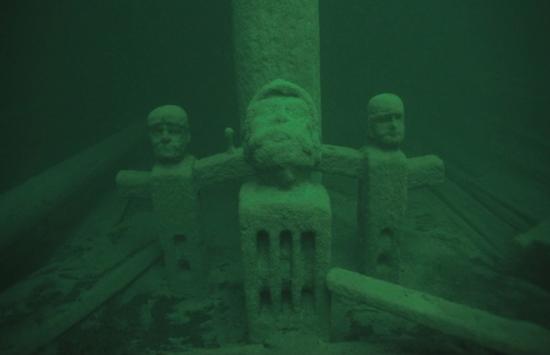
The Baltic Sea's floor is a marine archaeologist's delight: Shipworms and other wood-gobbling organisms can't survive in its cold, brackish water, and sunken ships are preserved intact for centuries.
"Archaeology is often about research and reconstruction of scarcely distinguishable residues, hard-to-interpret remnants or crumbling ruins. Not so with the Ghost Ship," wrote Swedish archaeologists Niklas Eriksson and Johann Rönnby of this 17th century Dutch trading vessel, its name a reference to its uncanny degree of preservation. "The Ghost Ship is an exceptional maritime archaeological find, which in terms of its state of preservation probably has few equals in the world."
Carved knightheads, a structural element used to tie mooring lines to a ship's bow, are visible in the photo above. Archaeologists hope the ship will teach them about the techniques of Dutch shipbuilders, who by the 17th century were among the world's finest, helping the tiny nation define itself in a newly globalized world.
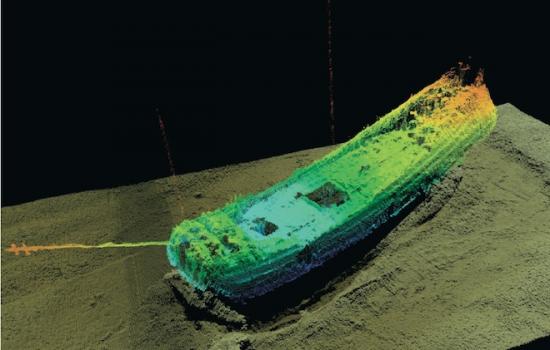
Image: 1) Marin Mätteknik/Deep Sea Productions/Niklas Eriksson & Johan Rönnby/International Journal of Nautical Archaeology 2) Three-dimensional model of the ship. (Marin Mätteknik)
Citation: "'The Ghost Ship.' An Intact Fluyt from c.1650 in the Middle of the Baltic Sea." By Niklas Eriksson and Johan Rönnby. International Journal of Nautical Archaeology, March 30, 2012.
Titanic Revisited
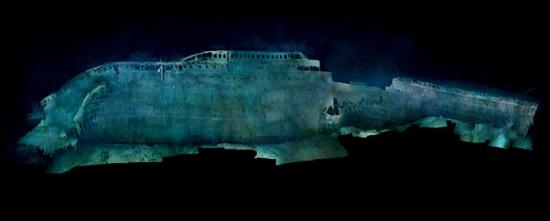
To mark the 100th anniversary of the Titanic's epic sinking, researchers from the Woods Hole Oceanographic Institute led an expedition to its North Atlantic grave. Autonomous underwater vehicles acquired hundreds of high-resolution photographs that were later stitched together into the largest images taken of the ship since its fateful launch.
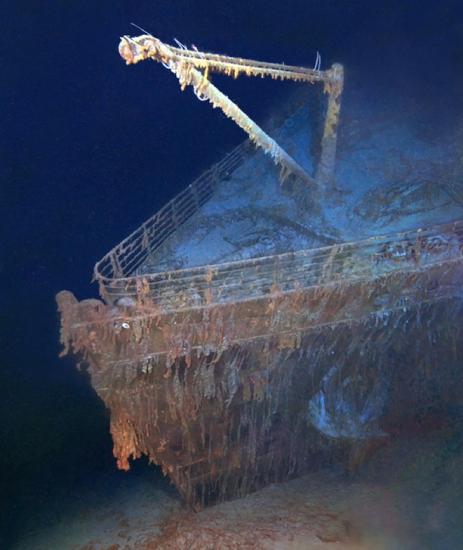
Images: 1) A mosaic of the ship's front stern and bow sections, which broke apart and landed separately on the seafloor but here are digitally reunited. (Woods Hole Oceanographic Institution/NOAA) 2) Mosaic photograph of the Titanic's prow. (Woods Hole Oceanographic Institution/NOAA)
A Clock's Tale
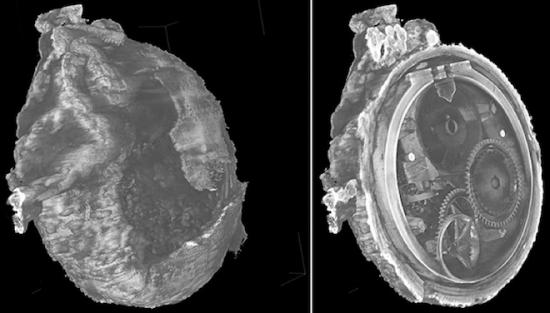
When this pocketwatch was found in the wreckage of the Swan, a British warship sunk off the west coast of Scotland in the 17th century, it appeared unsalvageable. Corrosion and mineral accumulations had turned it into a rust-hued, barnacle-studded hunk of rock and metal.
A different picture emerged, however, when the watch was set in the beams of a high-precision microfocus X-ray computed-tomography system -- something like a medical CAT scanner or x-ray machine, but capable of higher resolutions and three-dimensional detail.
Beneath the encrustations remained the watch's delicate machinery and even its maker's engraving: "Niccholas Higginson of Westminster." Historical records show that Niccholas Higginson was indeed a London clockmaker who in 1656 refused to pay guild membership fees and moved his trade outside the city, where he was free to run his own business.
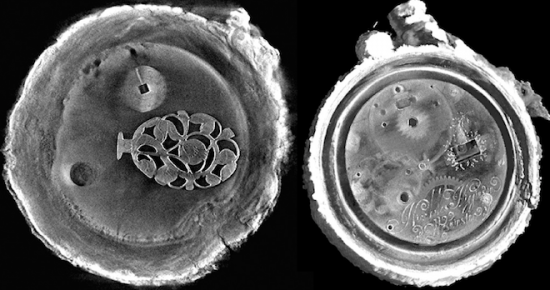
Images: 1) 3D-CT image of the watch and its inner mechanisms. (Trustees of the National Monuments Service/Troalen et al., International Journal of Nautical Archaeology) 2) Floral decoration and Higginson's engraving. (Trustees of the National Monuments Service/Troalen et al., International Journal of Nautical Archaeology)
Citation: "Three-Dimensional Computed Tomography X-Radiographic Investigation of a 17th-Century Watch from the Wreck of the Swan, off Duart Point, Mull, Scotland." By Lore G. Troalen, Darren Cox, Theo Skinner, Andrew Ramsey and David Bate. International Journal of Nautical Archaeology, Vol. 39 No. 1, March 2010.
PART. 2